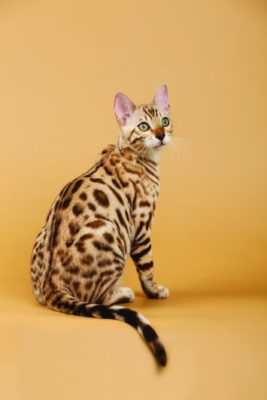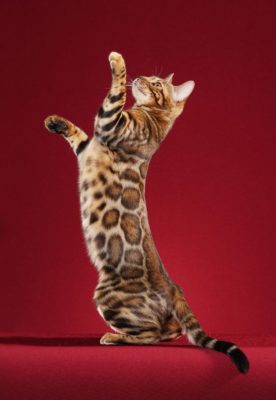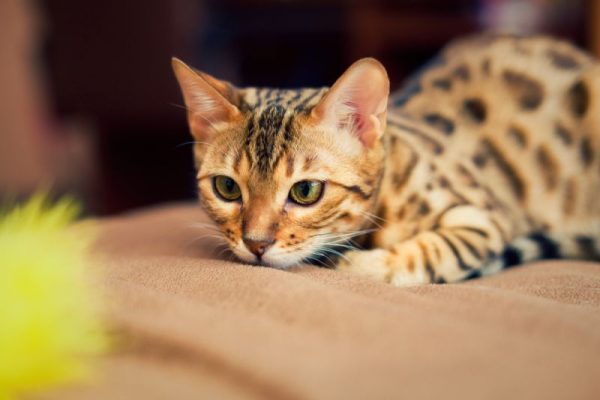Bengal Cat
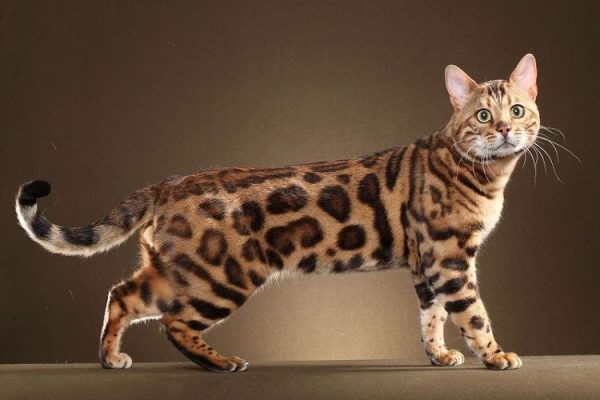
Some potential owners are frightened by the possibility of aggression due to the mixing of wild and domestic cat blood. However, this is completely unfounded. Bengal cats are not prone to aggression, uncontrollability, and excessive independence. They can easily find a common language with each member of the family.
Table of Contents
Breed Information
| Origin | United States |
| Size | Males 29-32 cm Females 26-30 cm |
| Weight | Males 5-8 kg Females 4-6 kg |
| Fur Type | Short-haired |
| Color | Spotted, marbled, black tabby, silver tabby, rosette |
| Lifestyle | Outdoors, indoors |
| Lifespan | 12-16 years |
| FIFe Classification | Category III: “Short-haired and Somali” Breed designation – BEN |
| WCF Classification | Group 3: “Short-haired” Breed designation – BEN |
| TICA Classification | BG |
| Group | Short-haired cats |
| Price | $600-5000 |
Breed Photos
Origin History
The Bengal cat has an unusual origin. A breed representative is an interbreed hybrid of the domestic cat (Felis silvestris catus) and the Bengal cat (Prionailurus bengalensis). We owe the formation of the Bengal to one determined cat lover, Jane Mill. Despite the prejudices of her colleagues, she was able to create an exclusive breed of cat.
In 1960, her Bengal cat mated with a black house cat. Among the offspring was an interesting spotted kitten. Unfortunately, the first great-Bengal died, and work on the breed was put on hold for a while. While still a student at the University of California, Jane was interested in the possibility of creating a new breed. But her supervisor considered such a research topic to be “frivolous” and advised her to focus on breeding something more practical.
In 1980 Jane resumed work on the breed. Then the young researcher was faced with the question of which breeds would participate in Bengal breeding. She used Asian leopard cats, Abyssinian, American shorthair, Burmese and Egyptian Mau.
In 1983, through careful selection and breeding work, the ideal representatives of the breed were selected. And since 1985, Jane Mill’s pets have actively participated in national shows, captivating experts and spectators with their unique appearance. The International Cat Association recognized the Bengal cat in 1991.
Appearance
A distinctive feature of the Bengal cat is considered to be its chic appearance. The exquisite gait, piercing glance, and unusual coloring – all this is inherent exclusively to Bengals. The build of a Bengal cat is strong and elongated but not massive. Bengals are somewhat larger than the average domestic cat. The structure of the skull is of the “wild” type. The shape of the head is wedge-shaped, slightly elongated with very smooth contours.
The ears continue the wedge line, medium in size, wide at the base, and rounded at the end. The eyes are oval, moderately large, and very expressive. The color of the eyes is bright and intense, depending on the color of the coat. Can be found: light green, gold, blue, and a shade of sapphire. The neck is long enough, graceful, and with a developed musculature.
The limbs are of medium length, proportional. The tail of a Bengal cat is medium length, thick, and tapered toward the end. It is ringed with dark stripes or covered with small spots. The coat is short, smooth, and shiny.
The coloration of Bengals is very reminiscent of leopards. Acceptable colors: spotted, marbled, rosette, black tabby, silver tabby. The blue coloring is now recognized only by one of the international felinological organizations (TICA). Melanistic coloration is in the process of recognition.
Character
Some potential owners are frightened by the possibility of aggression due to the mixing of wild and domestic cat blood. However, this is completely unfounded. Bengal cats are not prone to aggression, uncontrollability, and excessive independence. They can easily find a common language with each member of the family.
Cats and dogs of other breeds are friendly. It is important to watch Bengal’s attitude to small animals. The Bengal cat has a highly developed hunting instinct, and a pet hamster can easily become prey for it. They combine activity, curiosity, and affection, which they are constantly ready to give to the owner.
Care
The silky and short hair of a Bengal cat does not require complex care. It is enough to comb out the cat with a soft brush once every few weeks. The peculiarity of Bengals is their great cleanliness and love of water. But frequent water procedures are contraindicated. Hard water can worsen the condition and appearance of the coat of a Bengal cat. Brushing teeth, claw trimming, and cleaning ears and eyes is desirable every week.
Education
The Bengal cat is reverent to its owner and does not tend to be stubborn. They can show independence, as it is inherent. But there will be no special problems in raising a Bengal; they are obedient and purposeful. Show a little persistence, and the cat will immediately hurry to please you.
Owners note an excellent propensity for learning and training. Bengals can quickly get used to the litter box and scratching post and walk on a leash or bring a ball.
Common Diseases
With proper care, Bengal cats can delight you for 16 years. Representatives of the breed are not prone to developing severe genetic diseases and are considered very hardy. However, there is still a risk of some diseases:
- hip dysplasia;
- hypertrophic cardiomyopathy;
- progressive retinal atrophy;
- inflammatory bowel processes;
- flat-chest syndrome in kittens.
Nutrition
The diet of a Bengal cat should be balanced, and feeding should be regular. Bengals are undemanding in the choice of food and have no problems with intolerance or allergic reactions. For feeding, both natural diets and ready-made foods are suitable. Food should be chosen with all the necessary premium vitamin supplements for medium cat breeds.
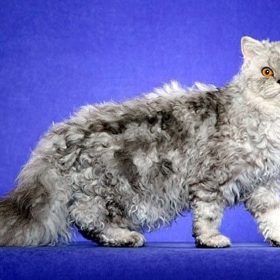 Selkirk Rex Longhair
Selkirk Rex Longhair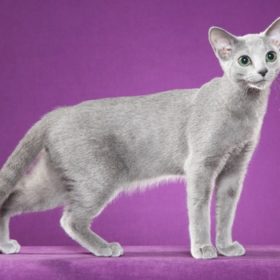 Russian Blue
Russian Blue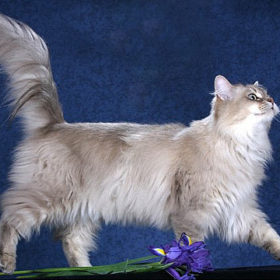 Chantilly-Tiffany
Chantilly-Tiffany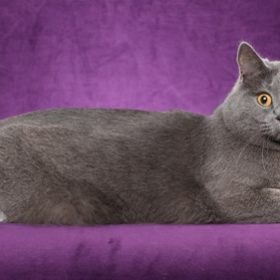 Chartreux
Chartreux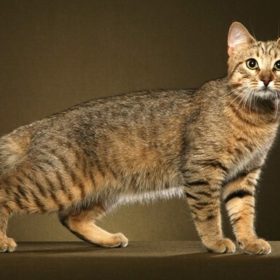 Pixie-bob Shorthair
Pixie-bob Shorthair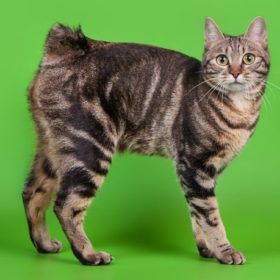 Kurilian Bobtail Shorthair
Kurilian Bobtail Shorthair